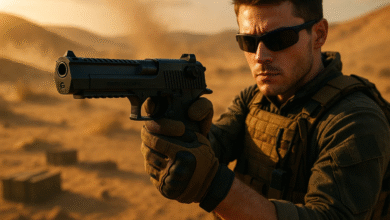Essential Powersports Apparel for Off-Road Adventures in Idaho

Choosing The Right Powersports Apparel
Choosing the correct Powersports Apparel for off-road adventures in Idaho is super important. You want to be comfortable, protected, and ready for anything Mother Nature throws your way. It’s not just about looking cool; it’s about staying safe and enjoying your ride.
Consider Weather Conditions
Idaho weather can be pretty unpredictable, especially in the mountains. One minute you’re basking in sunshine, and the next, you’re caught in a downpour. Always check the forecast before you head out and pack clothing that can handle a range of conditions. Think layers! This way, you can add or remove items as needed to stay comfortable. Don’t forget that higher elevations can get surprisingly cold, even in the summer.
Evaluate Terrain Types
The terrain in Idaho varies wildly, from dusty desert trails to muddy forest paths. Your Powersports Apparel should match the type of riding you’ll be doing. For example, if you’re tackling rocky trails, you’ll want extra durable gear to protect against abrasions. If you’re riding in muddy conditions, waterproof clothing is a must. Also, consider the vegetation. Thorns and branches can tear up flimsy fabrics pretty quickly.
Select Appropriate Materials
The material of your Powersports Apparel makes a huge difference in comfort and performance. Look for fabrics that are breathable, moisture-wicking, and durable.
- Moisture-wicking fabrics help keep you dry by pulling sweat away from your skin.
- Breathable materials prevent you from overheating.
- Durable fabrics can withstand the wear and tear of off-road riding.
Synthetic materials like polyester and nylon are popular choices because they offer a good balance of these qualities. Some riders also prefer natural fibers like merino wool for their excellent moisture-wicking and odor-resistant properties. Consider investing in Powersports accessories Idaho to enhance your experience.
Essential Gear For Off-Road Riding
Off-roading in Idaho is a blast, but you need the right gear to stay safe and comfortable. It’s not just about having fun; it’s about being prepared for anything the trail throws at you. Let’s break down the must-have items for any serious off-road adventure.
Protective Helmets
A good helmet is the single most important piece of gear you’ll own. It’s your first line of defense against head injuries, and you absolutely shouldn’t skimp on quality. Look for helmets that meet or exceed safety certifications like DOT or ECE. Fit is also key – a helmet that’s too loose won’t protect you properly in a crash. Consider features like ventilation to keep you cool and a visor to shield your eyes from the sun and debris. I’ve seen too many riders with cheap helmets that offer minimal protection; invest in a quality one, and you’ll thank yourself later.
Durable Riding Boots
Off-road riding boots are way more than just footwear; they’re crucial for ankle and foot protection. Regular shoes or work boots just won’t cut it. Riding boots offer support, prevent twisting injuries, and shield your feet from impacts with rocks and branches. Look for boots with reinforced ankles, sturdy soles, and a secure closure system. Waterproofing is a plus, especially if you’re riding in wet conditions. Trust me, a twisted ankle miles from civilization is not a fun experience.
Comfortable Riding Gloves
Riding gloves might seem like a minor detail, but they make a huge difference in comfort and control. They protect your hands from blisters, abrasions, and the elements. Look for gloves with a good grip, reinforced palms, and knuckle protection. Breathability is important to prevent sweaty hands, which can reduce your grip. I prefer gloves with adjustable wrist closures for a snug fit. I’ve tried riding without gloves before, and it’s a recipe for discomfort and potential injury.
Off-road riding gear is an investment in your safety and enjoyment. Don’t cut corners on quality, and always make sure your gear fits properly. Taking the time to choose the right equipment will make your off-road adventures in Idaho much safer and more enjoyable.
Layering Techniques For Off-Road Adventures
Layering is super important when you’re out on the trails in Idaho. The weather can change fast, and you need to be ready for anything from sunshine to sudden rain or even snow, depending on the time of year and where you are. The right layers will keep you comfortable and safe, letting you focus on the ride.
Base Layers For Comfort
Base layers are what you wear closest to your skin, and they’re all about managing moisture. You want something that wicks sweat away so you don’t get cold and clammy. Merino wool or synthetic fabrics are good choices. Avoid cotton because it holds onto moisture and can make you feel really uncomfortable. I usually go for a long-sleeved shirt and leggings, even in warmer weather, for extra protection against the sun and scratches from brush.
Insulating Mid Layers
Mid layers are for warmth. Fleece or down jackets are great because they trap heat without being too bulky. The key is to have something you can easily take off and pack away if you start to overheat. I often bring two different mid-layers: a lighter fleece for milder days and a heavier down jacket for when it gets really cold. This gives me more flexibility to adjust to changing conditions.
Waterproof Outer Layers
Idaho weather can be unpredictable, so a waterproof and windproof outer layer is a must. Look for a jacket and pants that are breathable, so you don’t get too sweaty inside. Features like taped seams and waterproof zippers are important for keeping the rain out. I always keep a lightweight rain jacket in my pack, even if the forecast looks clear. You never know when you might need it.
Layering isn’t just about adding more clothes; it’s about creating a system that works together to keep you comfortable in a range of conditions. Think of it like building a personalized climate control system for your body. Experiment with different combinations to find what works best for you and the type of riding you do.
Safety Features In Powersports Apparel
Impact Resistance
When you’re tearing it up on the trails, crashing is just part of the game. That’s why impact resistance is so important in powersports gear. We’re talking about reinforced materials in key areas like shoulders, elbows, knees, and the back. These reinforcements can be anything from hard plastic shells to energy-absorbing foam. The goal is to spread the force of impact over a larger area, reducing the risk of serious injury.
Think about it like this:
- Helmets: Must meet DOT or ECE standards. These standards test the helmet’s ability to absorb impact from different angles and speeds.
- Jackets and Pants: Often include CE-rated armor at impact zones. CE ratings indicate the level of protection offered.
- Boots: Should have reinforced ankles and toes to protect against twisting and crushing injuries.
Visibility Enhancements
Being seen is half the battle, especially when you’re sharing trails with other riders, hikers, or even vehicles. High-visibility colors, reflective strips, and even integrated lighting can make a huge difference. I remember one time I was riding at dusk, and a buddy of mine with a bright orange jacket was the only reason I didn’t run into him on a tight turn.
Here’s a quick rundown:
- Bright Colors: Neon yellow, orange, and green are your best bets.
- Reflective Material: Strategically placed strips on jackets, pants, and helmets.
- Lighting: Some gear comes with built-in LED lights for extra visibility in low-light conditions.
Breathability and Comfort
It’s easy to overlook comfort when you’re focused on safety, but trust me, being comfortable is a safety feature in itself. If you’re too hot, too cold, or just plain uncomfortable, you’re going to be distracted, and that’s when accidents happen. Breathable materials and ventilation systems can help regulate your body temperature and keep you focused on the ride.
Riding gear that breathes well can make a huge difference on long rides. Look for features like mesh panels, moisture-wicking fabrics, and adjustable vents. If you’re comfortable, you’re more likely to stay alert and make good decisions on the trail.
Popular Brands For Off-Road Apparel
Choosing the right brand for your off-road gear can make a huge difference in your comfort, safety, and overall experience. There are a ton of brands out there, each with its own strengths and weaknesses. Let’s take a look at some of the more popular ones.
Fox Racing
Fox Racing is a big name in the off-road world, known for its high-quality gear and innovative designs. They offer a wide range of products, from helmets and boots to jerseys and pants, all designed to withstand the rigors of off-road riding. I’ve personally used their gear for years and have always been impressed with its durability and performance. They’re constantly pushing the boundaries of what’s possible, incorporating new technologies and materials into their products. They aren’t the cheapest option, but you often get what you pay for.
Arctic Cat
Arctic Cat is primarily known for its ATVs and snowmobiles, but they also have a solid line of apparel designed specifically for powersports. Their gear is built to withstand harsh conditions, making it a great choice for riders who frequently encounter mud, snow, or extreme temperatures. I’ve found their stuff to be pretty reliable, and it’s often a bit more budget-friendly than some of the other big brands. They focus on practicality and functionality, which is a plus if you’re more concerned with performance than style.
Thor MX
Thor MX is another popular brand among off-road enthusiasts, offering a wide range of gear for riders of all skill levels. They’re known for their stylish designs and comfortable fit, making them a favorite among riders who want to look good while they ride. I’ve seen a lot of riders sporting Thor MX gear at the local tracks, and they always seem happy with it. They strike a good balance between performance and affordability, making them a solid choice for riders who are just starting out or who are on a budget.
When choosing a brand, it’s important to consider your individual needs and preferences. Think about the type of riding you do, the conditions you typically encounter, and your budget. Don’t be afraid to try on different brands and styles to find what works best for you. Reading reviews and talking to other riders can also be helpful in making your decision.
Maintenance Tips For Powersports Apparel
Okay, so you’ve got all your cool gear for tearing it up in Idaho. But let’s be real, it’s gonna get trashed if you don’t take care of it. Here’s the lowdown on keeping your stuff in decent shape.
Cleaning Techniques
First things first, read the label! Seriously, don’t just toss everything in the washing machine and hope for the best. Most riding gear needs special treatment. For example:
- Jackets and Pants: Use a mild detergent and a soft brush to scrub off mud and grime. Some are machine washable on a gentle cycle, but air drying is always the safest bet.
- Helmets: Wipe down the outer shell with a damp cloth. The inner liner might be removable and washable – again, check the label. Never use harsh chemicals or solvents.
- Boots: Clean off dirt with a brush and water. Leather boots might need conditioning to prevent cracking. Let them air dry completely before storing.
- Gloves: Depending on the material, you can hand wash them or use a gentle machine cycle. Make sure they’re completely dry before you use them again, or you’ll have some seriously uncomfortable hands.
Storage Recommendations
How you store your gear is almost as important as how you clean it. Here’s the deal:
- Dry it out: Never store damp gear. Mold and mildew are not your friends.
- Hang it up: Jackets and pants should be hung on sturdy hangers to maintain their shape. Don’t just stuff them in a bag.
- Boots upright: Store boots in a cool, dry place, preferably upright to maintain their form. Boot dryers are a good investment if you ride often.
- Helmets: Keep your helmet in a helmet bag or somewhere it won’t get scratched or damaged. Avoid storing it in direct sunlight or extreme temperatures.
Proper storage is key to extending the life of your powersports apparel. Think of it as an investment – a little care now can save you money in the long run.
Repairing Damages
Stuff happens, right? A tear here, a broken buckle there. Here’s what you can do:
- Small tears: A patch kit can work wonders for minor rips in fabric. Follow the instructions carefully.
- Broken zippers: Zippers are a common point of failure. Consider taking your gear to a tailor or seamstress for zipper replacement.
- Buckles and straps: Check if the manufacturer sells replacement parts. Sometimes you can find generic replacements online.
- Major damage: If your gear is seriously damaged, it might be time to replace it. Safety first!
Accessorizing Your Off-Road Outfit
Alright, so you’ve got your helmet, boots, gloves, and the main riding gear sorted out. But let’s be real, the right accessories can seriously up your game and make those Idaho trails way more enjoyable. It’s about comfort, safety, and just plain convenience out there. Let’s dive into some must-haves.
Protective Eyewear
First up: eyewear. You absolutely need something to protect your eyes from dust, mud, branches, and the sun. Goggles are the go-to for most off-road riders. Look for ones with anti-fog lenses and a good seal around your face. I’ve tried a few cheap pairs, and trust me, it’s worth investing in quality. Nothing ruins a ride faster than constantly having to stop and wipe your eyes. Consider photochromic lenses that adjust to changing light conditions – super handy when you’re riding in and out of wooded areas.
Knee and Elbow Pads
Okay, let’s talk about impact protection. Crashing is part of the game, unfortunately. Knee and elbow pads can save you from some serious scrapes and bruises, or worse. I personally prefer the strap-on kind because they’re easy to adjust and take off, but some riders like the compression-style sleeves. It really comes down to personal preference. I’d say, if you’re doing more technical riding or hitting jumps, definitely don’t skip on these. I’ve had a few close calls where I was really glad I had them on.
Hydration Packs
Staying hydrated is super important, especially when you’re pushing yourself on those Idaho trails. A hydration pack is the easiest way to carry water without having to stop and fumble with bottles. Look for one that fits comfortably and has enough capacity for your typical ride length. I usually go for a 2-3 liter pack. Some packs also have extra storage for tools, snacks, or your phone, which is a nice bonus. Seriously, don’t underestimate how much water you’ll need, especially in the summer heat.
I remember one time I went out riding without a hydration pack, thinking it would be a short trip. Ended up getting lost and running out of water. It was miserable. Now, I never leave home without one. It’s just not worth the risk. Plus, having a little extra space for a snack or a small tool kit can be a lifesaver.
Here’s a quick guide on hydration pack sizes:
| Pack Size (Liters) | Ideal Ride Length | Considerations |
| 1.5 – 2 | 1-2 hours | Lightweight, good for shorter, faster rides |
| 2 – 3 | 2-4 hours | Versatile, balances capacity and comfort |
| 3+ | 4+ hours | For long days, extra gear, or hot weather |
And here are some things to consider when choosing accessories:
- Fit: Make sure everything fits properly and doesn’t restrict your movement.
- Comfort: You’ll be wearing this stuff for hours, so comfort is key.
- Durability: Off-road riding is tough on gear, so choose accessories that can handle the abuse.



